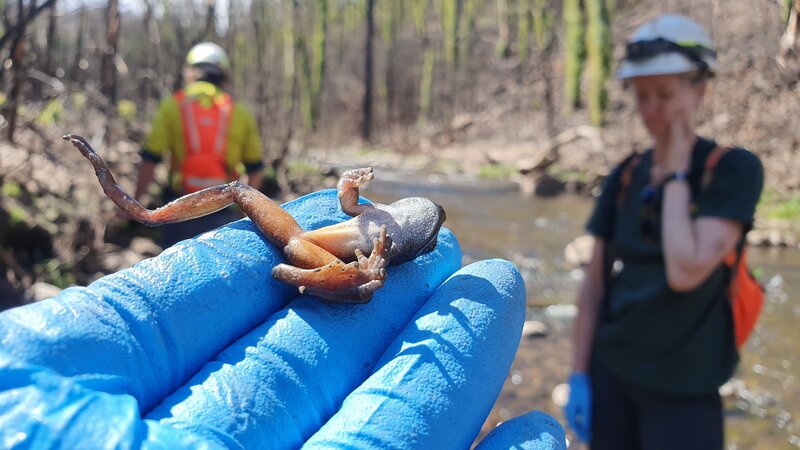Endangered frogs rescued from fire zones for breeding program

Nineteen critically endangered Spotted Tree Frogs collected from fire-ravaged areas in north-east Victoria are heading to a breeding program with the help of University Melbourne researchers.
The program will ensure the survival of the frogs, whose numbers have declined to a crisis point in the past three decades.
“The majority of the frogs collected were juveniles,” said amphibian ecologist Dr Matt West, from the School of BioSciences. “We selected younger animals because this will have the least impact on the remaining wild populations, as juvenile frogs currently have a better chance of surviving in captivity than they do in the wild. We also chose frogs with genetic diversity from multiple sites to, again, ensure a strong start to the breeding program.”
The frogs were taken from fire-affected rivers in the Upper Murray and Wonnangatta areas and are in quarantine at Healesville Sanctuary being treated for the deadly disease Chytridiomycosis, caused by a fungus (Amphibian Chytrid Fungus) as a result of last year’s bushfires and subsequent flooding.
“While bushfires can kill the frogs, post fire, heavy rainfall which triggers flash flooding, sediment and debris flows, can also severely impact on egg and tadpole recruitment and the frogs’ habitat,” Dr West said.
The amphibians will eventually join a captive breeding program at Zoos Victoria.
“Our aim is to increase the resilience of wild populations to existing threats and future fire events and we hope the captive conservation breeding program will help us achieve it,” said Dr West.
Deon Gilbert, from Zoos Victoria, said the collected frogs are in quarantine to ensure we can clear any potential chytrid infections.
“The frogs will be bred in new specialised facilities funded by donors following the bushfires, including Freddo Frog.”
Dr West last year worked with the Department of Environment, Land, Water and Planning (DELWP) and the Threatened Species Recovery Hub to survey seven locations in north-east Victoria where frogs were at risk.
Senior Natural Environment Programs Officer, Glen Johnson, from DELWP said: “The surveys undertaken post fire and last spring confirmed that action needed to be taken to remove a small number of frogs with genetic diversity from multiple sites to establish the captive breeding program.”
The Spotted Tree Frog Project forms part of the Victorian Government’s $51.5 million Bushfire Biodiversity Response and Recovery program, which supports on-ground action to help at-risk species impacted by the 2019/20 bushfires.
The program is supported by the Australian Government’s National Environmental Science Program through the Threatened Species Recovery Hub and funding from the Australian Government’s Bushfire Recovery Program for Wildlife and their Habitats.